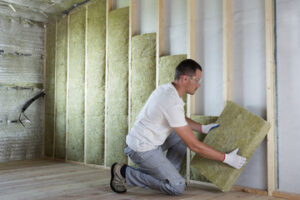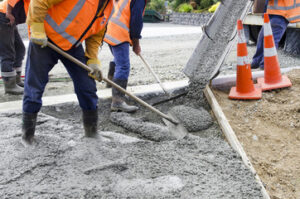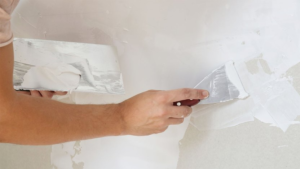Old insulation can be a magnet for pests, mold and moisture. Removing it protects your home from these problems and can boost resale value.

Insulation Removal requires specialized tools and knowledge. It’s also a dangerous job that should only be tackled by professionals with experience in the task. The following steps in the process include: Preparation, Removal and Disposal. Contact Perth Insulation Removal for professional help.
Insulation removal is a messy and hazardous job that requires the use of specialized equipment. It is also important to understand the type of insulation being removed, as this will dictate the approach and precautions needed. In addition, knowledge of local regulations for proper disposal is vital to ensure that harmful substances are not released into the environment.
The first step in insulation removal is assessing the condition of the existing material and determining if it needs to be replaced. This involves looking for signs of damage and contamination. For example, urine or rodent droppings can affect the effectiveness of insulation, requiring removal and cleaning. Moisture and mold can also cause insulation to degrade, necessitating replacement. In addition, newer insulation materials are more energy efficient than older versions, prompting upgrades.
Before insulation removal begins, it is important to clear the area to protect surrounding spaces and create a workspace. Additionally, it is recommended that individuals wear appropriate PPE. This includes a respirator mask, protective eyewear, and disposable coveralls. This helps to prevent direct contact and inhalation of harmful contaminants.
The process of removing insulation involves either vacuuming or manually removing the material. Loose-fill and batt insulation can be sucked out with industrial equipment, while foam board may need to be cut or scraped off surfaces. Care must be taken when removing insulation around pipes, wiring, and vents to avoid damaging them.
During the removal process, a hygrometer and thermometer can be used to measure humidity and temperature in the space. These measurements will help determine if additional ventilation or decontamination is needed. Once the old insulation has been removed, the space can be sanitized and prepared for installation of new materials.
The crawlspace is a common location for insulation, but it can be prone to moisture and pests that damage or degrade the material. Insulation removal from this space is typically done by opening up wall sections and removing the material, then decontaminating and preparing the area for new installation. Depending on the size of the crawlspace, it can take up to a full day to remove the insulation from an attic.
Removal
Having old insulation removed and replaced can improve your home in several ways. It can improve indoor air quality by preventing the release of trapped odors and allergens. It can also reduce your energy costs by stabilizing temperatures and reducing the strain on heating and cooling systems. Finally, it can increase your resale value by demonstrating that your house is well-maintained and energy efficient to potential buyers.
The process of removing and replacing insulation starts with a thorough inspection and assessment. Professionals examine the insulated areas of your home, including attics and crawl spaces, for signs of damage, contamination, or inefficiency. This information helps them determine the best course of action for re-insulating your home.
Attic space insulation is typically installed with a layer of cellulose and fiberglass, which may become brittle over time. During the removal process, the professionals will remove the old insulation, clean the attic area, and ensure that the space is ready for new insulation to be installed.
If your attic or crawl space has been used for storage or other purposes, it will need to be cleaned and sanitized before the insulation is removed. This will prevent the spread of contaminants and ensure a safe working environment. It is also recommended that you wear protective gear, such as masks, goggles, and gloves, to limit exposure to harmful particles.
Removing insulation can be a messy job, and the type of insulation will dictate the removal method. The professionals will utilize a vacuum with a specialized attachment to minimize the mess, and they will take care to avoid damaging any structural components of your home. The debris will be bagged and disposed of according to local guidelines.
If your home has a crawl space, it is essential to turn off the power and check for live wires before attempting insulation removal. This will help protect you from an electric shock or fire and will also allow the professionals to work safely and efficiently. You should also remove any personal items from the attic space to prevent damage and create a clear working area.
Disposal
The process of removing and disposing of insulation requires special attention, as it can contain contaminants such as mold spores, rodent droppings, vermiculite, and asbestos. The removal and disposal should be done by a professional to ensure the safety of those working on it, as well as the occupants of the home. In addition, the area must be decontaminated to ensure no harmful materials are released into the air. Insulation should be carefully bagged and sealed to prevent it from leaking during transportation and disposal.
The first step is to clear out the attic space and remove any items that are in the way of the removal. This can be done using a ladder or scaffolding, depending on the situation. It is also important to wear the proper PPE during the removal, including gloves, safety goggles, and a mask or respirator. This will help to prevent insulation fibers from clinging to skin or entering the respiratory system, which could cause a variety of health problems. It is important to take care of the contaminated insulation by sealing it in plastic bags before it is removed from the attic. This will prevent the contamination from spreading to other parts of the home.
Once the contaminated insulation has been bagged, it should be disposed of at a facility that handles hazardous waste. This will ensure that the harmful elements don’t enter the environment, as well as preventing any health issues for the homeowner or others in the neighborhood.
In some cases, the insulation can be sold for reuse or repurposed, which is better than simply dumping it in landfills. Some reputable insulation companies offer this service, and it can be worth looking into for homeowners.
While it may seem like a simple concept, old insulation removal is often complicated and time-consuming. It is a task that is best left to professionals, who know all of the tricks and considerations to make the process as smooth and easy as possible. They can save you a lot of stress and energy that would be better spent on other aspects of your home.
Remediation
Insulation removal is typically a messy job and one best left to professionals who know how to handle the mess and minimize contamination. They also have the proper tools for clearing out old insulation and preparing the space for new materials. The cost of this service will vary depending on how much prep work is required.
Many different scenarios can require that existing insulation be removed and replaced, including leaky roofs or pest infestations. The need for removal can also be due to a renovation or home upgrade project that necessitates clearing out the attic space. Whether it’s an emergency or part of a planned update, professional contractors can help homeowners find the right type of insulation for their climate and energy efficiency needs.
Older insulation is prone to moisture infiltration, which can lead to mildew and mold growth, and even rot. The presence of these materials can pose a health risk and should be remedied immediately before the issue escalates. This can be done through a thorough clean and a full decontamination of the area to ensure that any contaminants are not spread.
The presence of rodent droppings, urine and carcasses can also contaminate existing insulation. In these situations, it is often necessary to remove the contaminated materials and completely sanitize the area before any new material can be installed. In addition, some types of older insulation, such as vermiculite, may contain asbestos, and these materials must be removed with care and carefully disposed of in accordance with local regulations.
The deterioration of insulation can result in inconsistent indoor temperatures, draftiness and higher utility bills. In some cases, the damage to attic insulation can be so severe that it is no longer functional and should be replaced.








